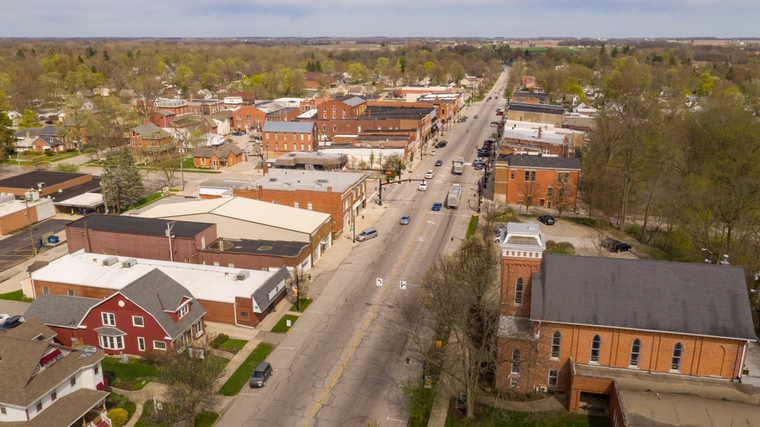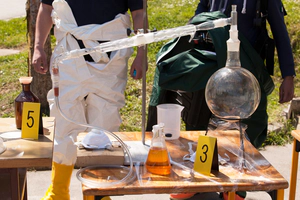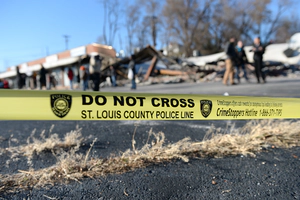How Methamphetamine is Assaulting America’s Heartland (Again)
Fentanyl isn’t the only serious threat on the illicit market. Methamphetamine is back, and it’s taking lives right alongside fentanyl.

No sooner had Americans begun to wrap their wits around the epidemic of opioid abuse than methamphetamine problems began once again to invade America’s heartland. The heartland of this country is made up of states that are vastly more rural than they are urban, states like Arkansas, Indiana, Oklahoma, Nebraska, North Dakota and Kansas. Many of these states are also called “flyover states” as people flying from one coast to the other seldom give them a thought.
But there are millions of honest, hardworking families in those states and they are being assaulted by a severe methamphetamine problem. Again.
Looking back in history, methamphetamine’s attack on these salt-of-the-earth families started in the 1980s.
The First Methamphetamine Assault on the Heartland
Rural meth labs run by outlaw motorcycle gangs were the first assault on our quiet countrysides. A 1991 report on gangs noted that the narcotics trade was the main source of income for these gangs. In California in the early 1980s, the gangs were mostly dealing with methamphetamine. Elsewhere, the gangs were distributing cocaine and amphetamines.1
Up and down the West Coast there were rural pockets of methamphetamine manufacture. It was important to manufacture this drug in a remote area because of the stink involved in cooling the drug. In 1989, 98% of all drug labs seized on the West Coast were meth labs. Meth manufacture and distribution then spread across the country, with large seizures occurring in Las Vegas, Nebraska, Georgia, Indiana, Tennessee, Florida, New York and other states.2
The Second Assault: Central California and Transnational Gangs

By 2001, Department of Justice reports on methamphetamine production and trafficking focused on criminal organizations utilizing farm properties in Central California for their labs. Meth cooks crossing the border from Mexico situated their superlabs in the remote Eastern District of California. Reports on arrests and lab seizures often mentioned Kern and Tulare Counties.
Large mobile labs made seizures difficult as they would move from one place to another, but still, there were more than 2,000 clandestine labs seized in 1999. These labs utilized precursor chemicals that were illicitly obtained or pseudoephedrine tablets smuggled in from the Middle East.3
The migration of this industry continued to move into the center of the country. By 2003, however, there were more meth labs seized in the Midwest than in any other region in the U.S.4
The Third Assault: Shake and Bake

Photo by Gino Santa Maria/Shutterstock.com
In 2006, the pseudoephedrine needed to make this drug in volume became largely unavailable when laws on the sale of cold medication and precursor chemicals tightened up. This shift drove some manufacturing south across the border. It also spawned a new method of cooking meth: the Shake and Bake method that utilized two-liter plastic bottles.5
This method kept meth cooks alive but they could only make small batches. What constituted a “meth lab” took on a much smaller scale—a hotel room, car, or garage could serve to cook up these small batches. This process resulted in large quantities of toxic trash that had to be disposed of somehow.
In an odd twist of fate, rural Missouri turned out to be the meth manufacturing center of the country. Factory jobs disappeared or left the country leaving the unemployed desperate for income. Some began cooking the drug and others distributed it. Other Missourians needed this drug so they could work two industrial jobs or keep up with the demands for speed in meat-packing plants. In 2012, while there were 79 meth lab seizures in California and 96 in Pennsylvania, there were 1,825 in Missouri. The number two location for seizures was right next door in Tennessee at 1,585.6
The Fourth Assault: Mexican Meth Arrives
At the same time that Missouri was the top meth lab seizure state, dozens of industrial-sized meth labs began to be dismantled in Mexico. The most spectacular seizure of the drug occurred outside Guadalajara where 15 tons of finished crystal meth was seized. The value of that haul, if sold on the street, would have been $1.2 billion.7

These huge labs were the result of cartels that had been trafficking heroin and marijuana looking to profit from the popularity of meth. The product they began to bring into the U.S. on their usual trafficking channels was cheaper and purer than anything seen before. It came into the country in commercial and personal vehicles passing through the Ports of Entry on the border. The cartels began importing large quantities of precursor chemicals from Asia to keep their factories running around the clock.[8]
To make matters worse, this stronger methamphetamine was often adulterated with fentanyl. Whether the contamination was accidental or intentional, some people who thought they were getting meth instead fatally overdosed on the powerful opioid fentanyl.
As the use of this new, cheaper drug resurged, rural areas were particularly hard hit. In Kentucky, for example, overdose deaths involving methamphetamine increased 65% in just two years.[9]
The Fifth Assault: A New Formula Drives High Incidence of Mental Illness
In the last decade, there has been a whole new assault on American rural areas. This time, the drug used in this assault is a powerfully potent form of the drug renowned for causing a high incidence of psychosis among users. In 2012, this new drug was making its way into Southern California. Over the next several years, it spread across the country.
A 2022 report noted that as opioids became less available due to reduced prescribing, some people switched to methamphetamine as their drug of choice. For a while, it was viewed as less risky and it was certainly cheaper. This newest method of cooking meth was called P2P. While meth abuse had always created mental and physical damage, this new kind of meth accelerated the harm.8
Medical professionals began to report a higher incidence of methamphetamine psychosis among patients seen in ERs and hospitals. One-third of the patients being diagnosed with this problem experienced extended periods of hospitalization lasting 60 to 90 days.8
Another 2022 report studied which drugs were being used by those living in rural communities in multiple states. Nearly 80% of 3,048 drug users stated that they had used methamphetamine in the past 30 days.
Some of these people were mixing methamphetamine and opioid use and they had the greatest risk of overdose. Of those drug users, 22% had suffered a non-fatal overdose. Of those using opioids alone, only 14% suffered overdoses along with 6% of methamphetamine-only users.9
By the late teens, prices on U.S. streets dropped 90% from the price a decade earlier. As marijuana became legal in more states, cartels could replace those sales with methamphetamine.
The incidence of mental illness grew, stressing state and local resources available to help these people. Meth users wouldn’t just go mad while they were using the drug. As noted above, their psychosis could last months or years after they stopped using it—or forever.1 As a result, this new drug began to fuel homelessness in urban centers as well as ruining lives in rural areas.
Prevention, Treatment, Interdiction

These are always the three essential fronts of overcoming any drug problem. 1. Prevent people from using drugs—it’s especially important to prevent young people from ever starting. 2. Provide rehab for those who become addicted. 3. And take the drugs and drug traffickers off the street.
With the intensity of problems caused by methamphetamine, the drug rehab programs selected by families need to be highly effective. They also need to last long enough for a person to forge a whole new lifestyle for themselves and for their bodies and brains to heal from the damage methamphetamine causes. Many people who have been caught in this trap are going to need long-term inpatient or residential rehab so they can get the all support they need.
Sources:
-
“Outlaw Motorcycle Gangs, USA Overview.” Office of Justice Programs, 1991. OJP ↩︎
-
“Methamphetamine.” National Drug Information Center, 2001. NDIC ↩︎
-
“Methamphetamine Drug Threat Assessment.” Department of Justice, 2005. DOJ ↩︎
-
“The Rise and Fall of America’s Rural Meth Labs.” Bloomberg, 2020. Bloomberg ↩︎
-
“This Map Reveals Exactly Where Meth Is A Huge Problem In America.” Business Insider, 2013. Business Insider ↩︎
-
“Mexican meth production goes on speed.” Reuters, 2012. Reuters ↩︎
-
“Refractory Methamphetamine-Induced Psychosis: An Emerging Crisis in Rural America and the Role of Amantadine in Therapeutics.” National Library of Medicine, 2022. NLM ↩︎ ↩︎
-
“Association of Methamphetamine and Opioid Use With Nonfatal Overdose in Rural Communities.” JAMA Network, 2022. JAMA Network ↩︎






 ®
®